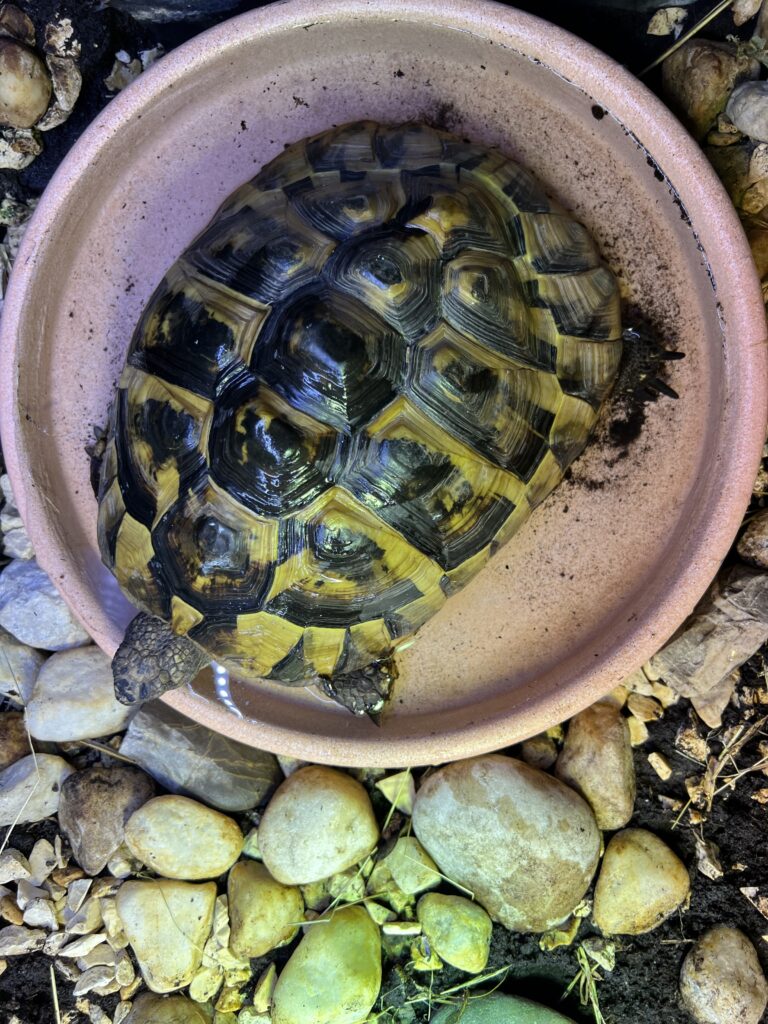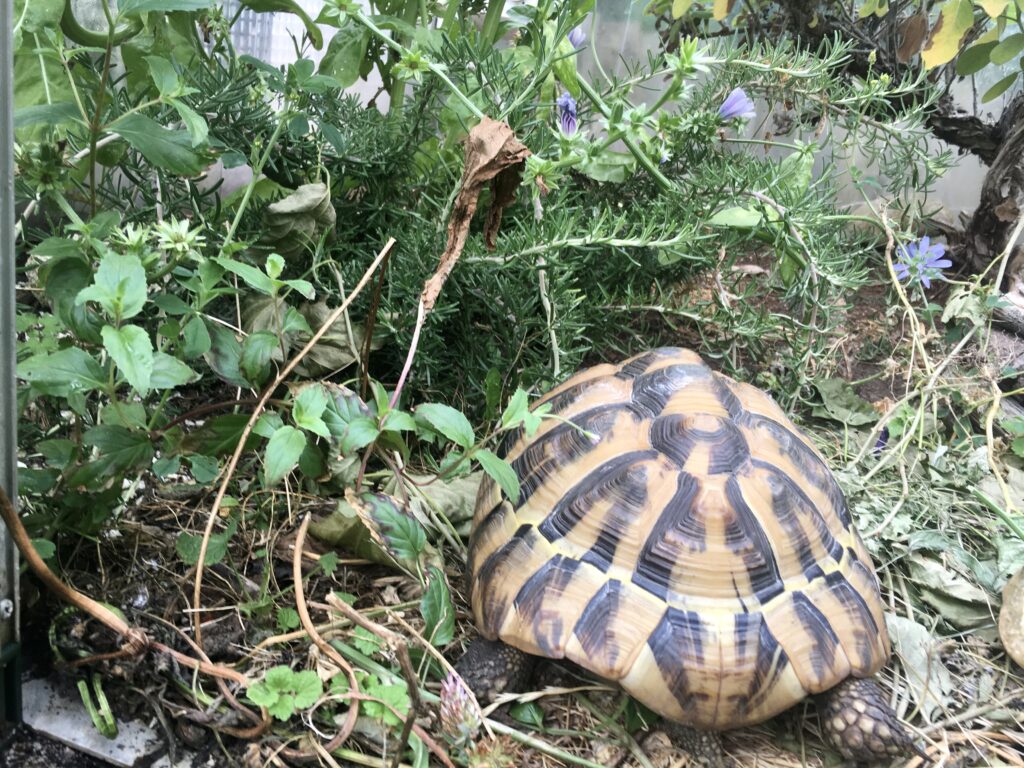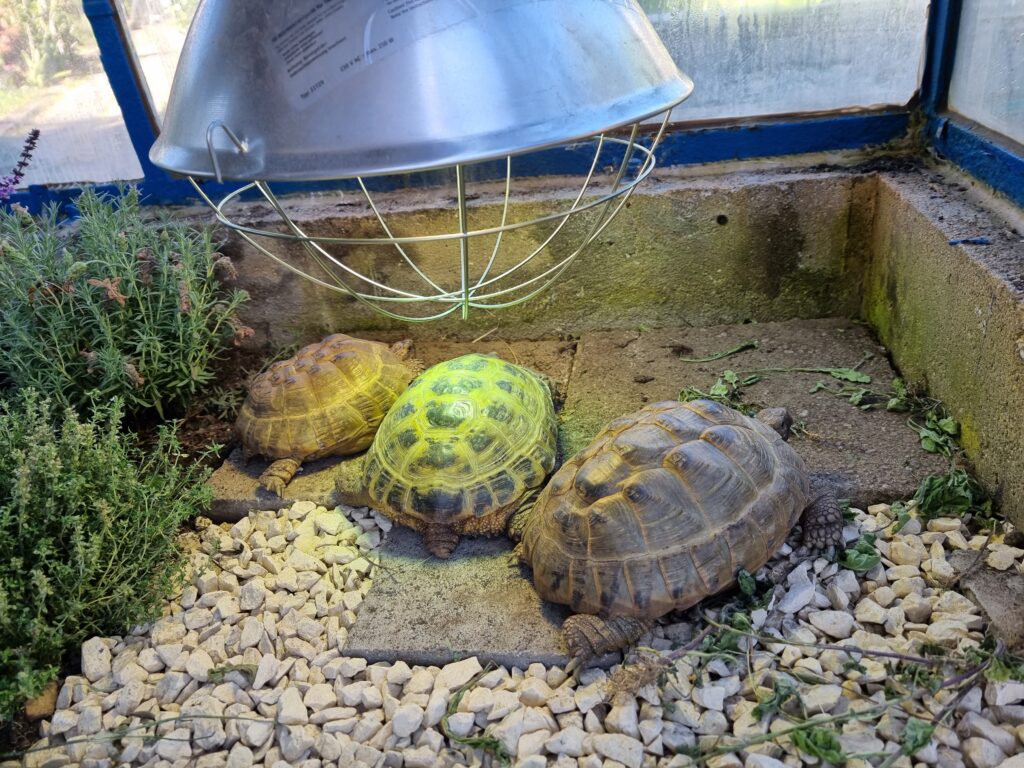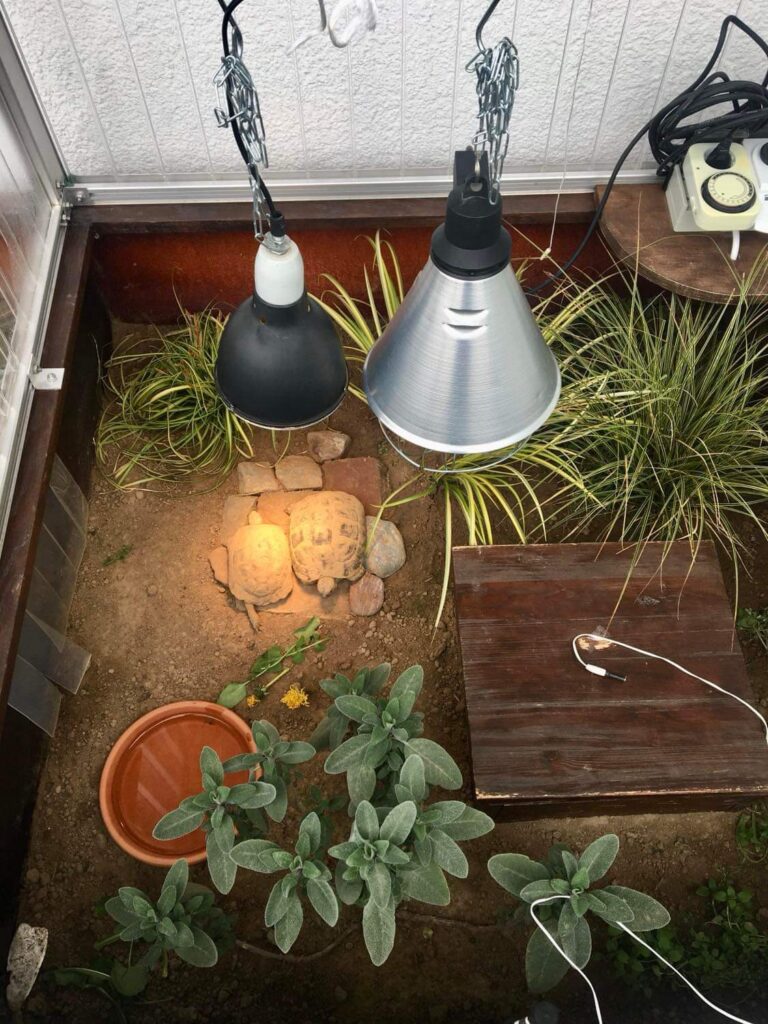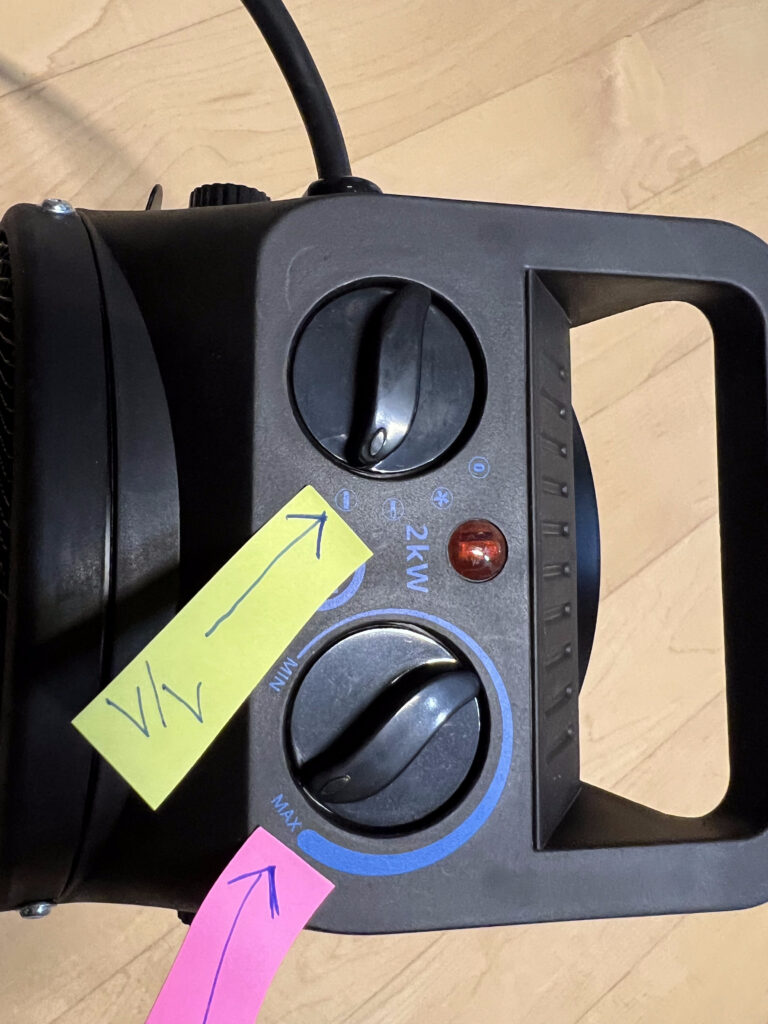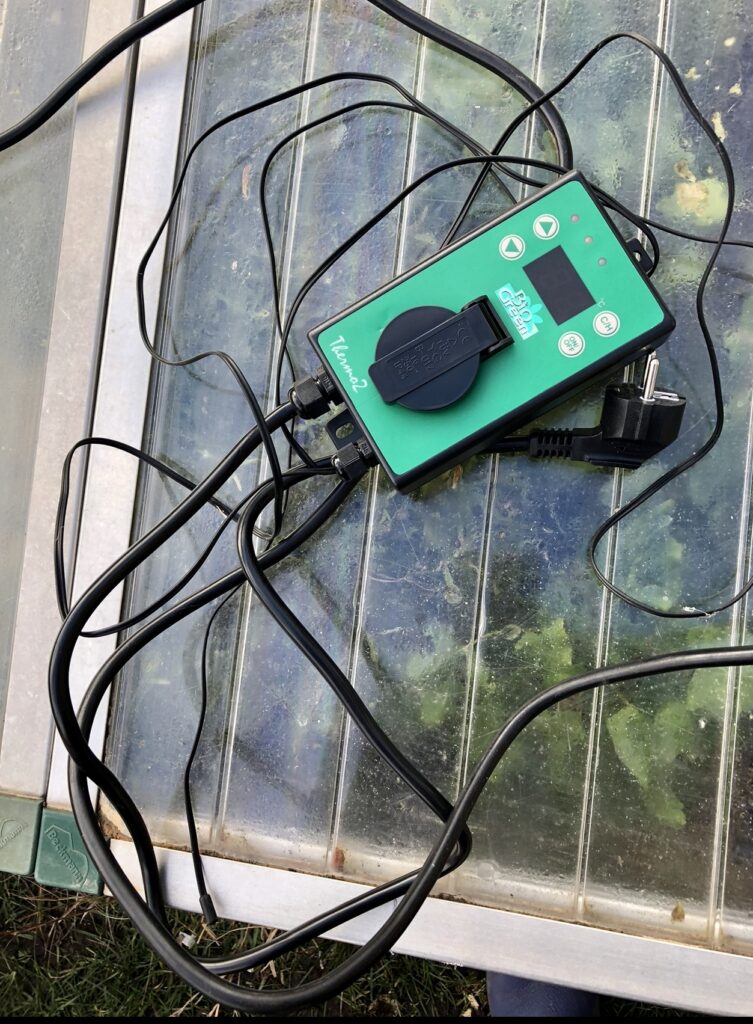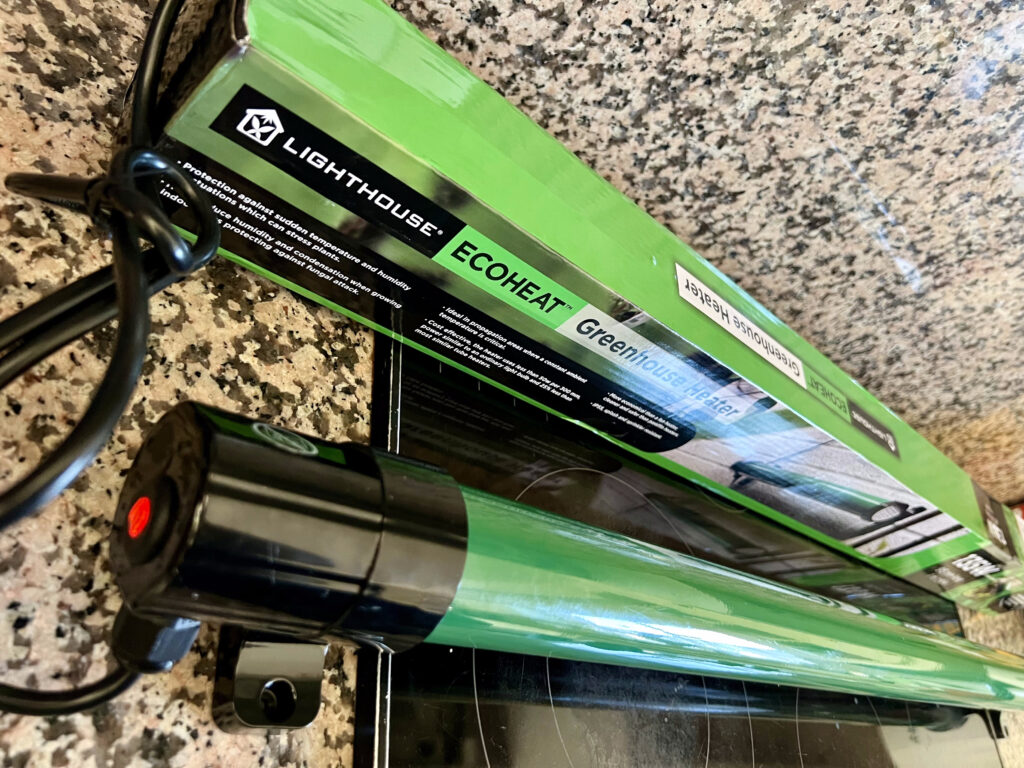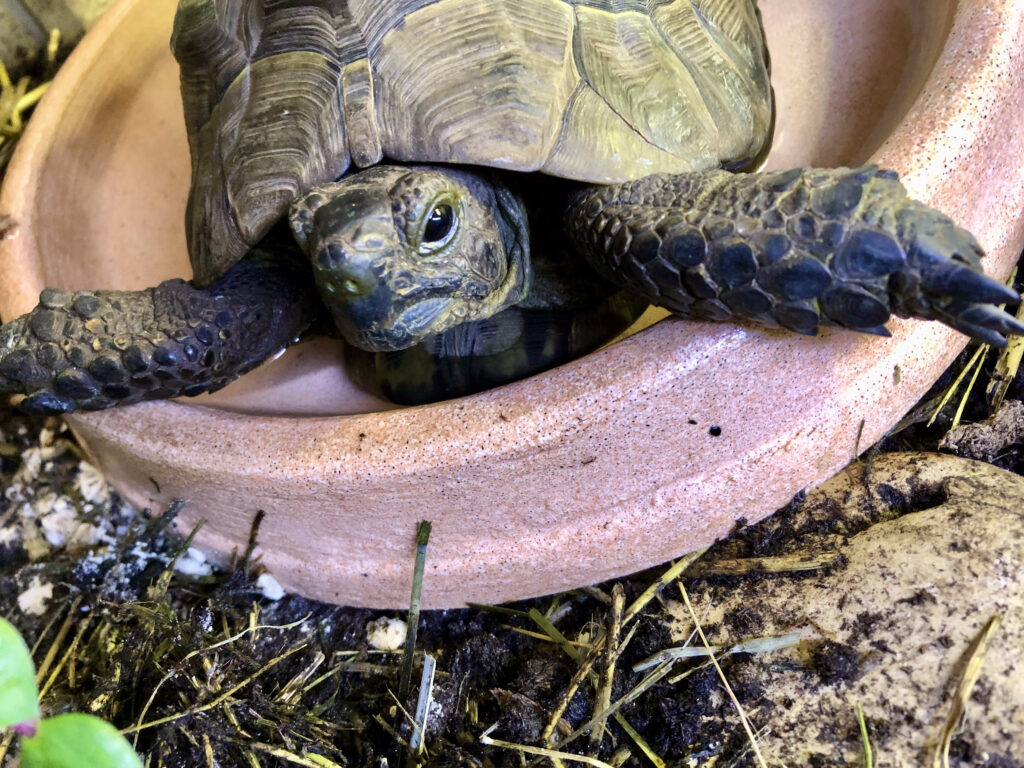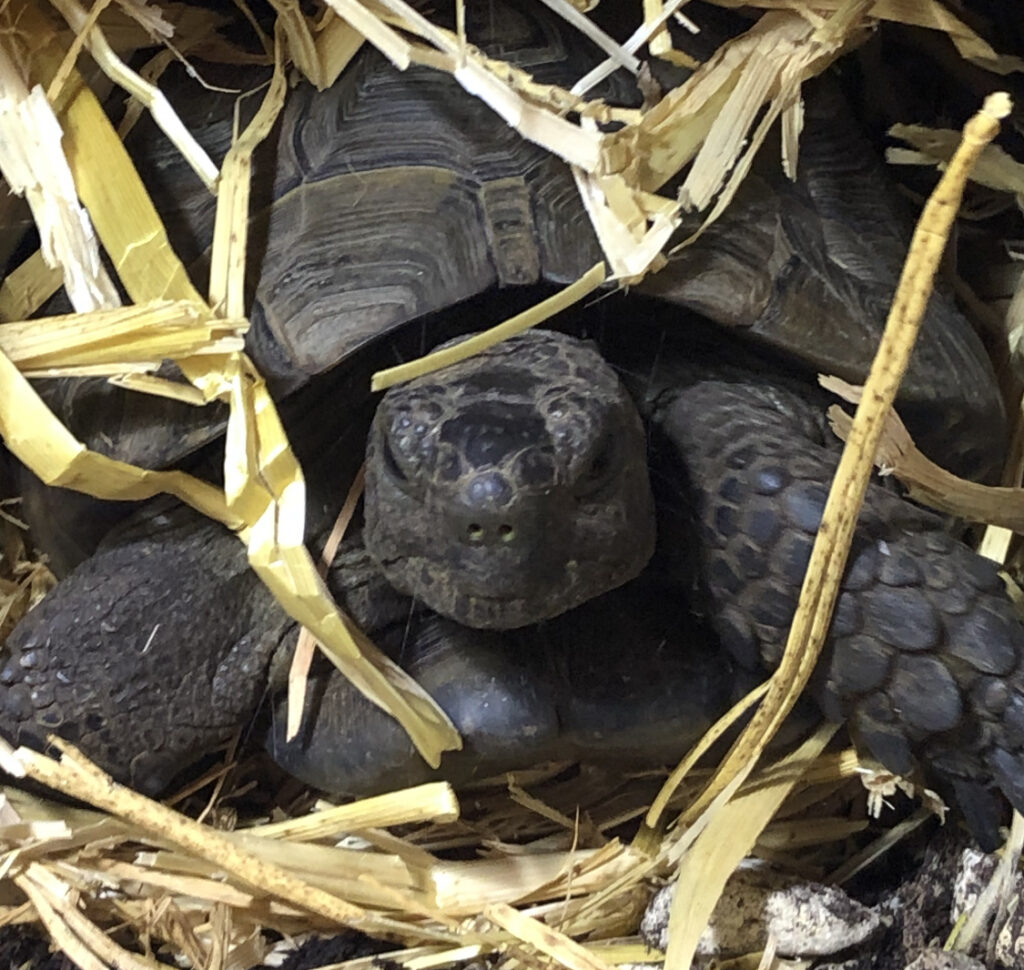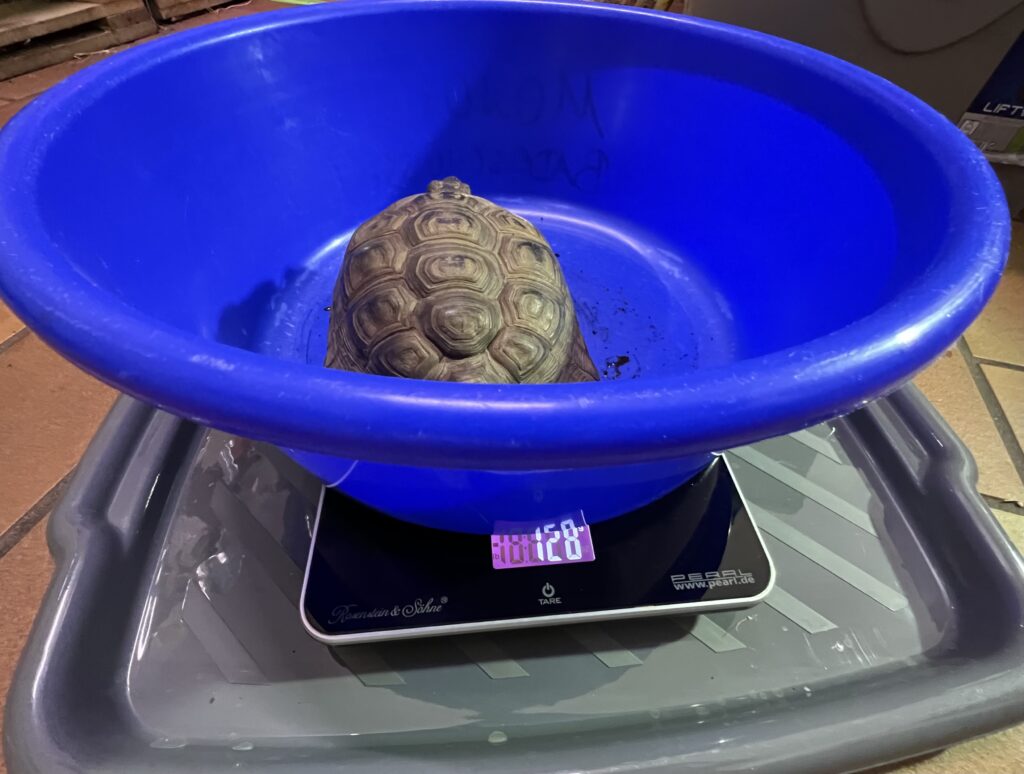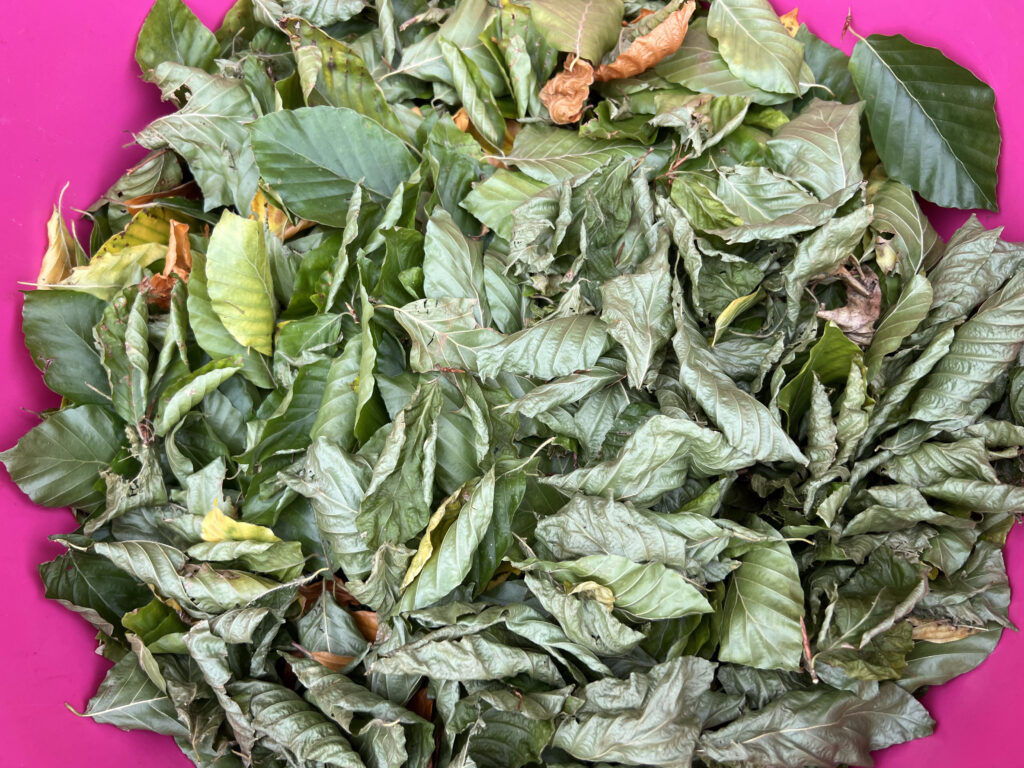Week 1: Temperature Reduction
At the end of October, it’s time to check climate tables and weather data of the tortoises‘ habitats.
Eastern Greek Tortoises (Testudo hermanni boettgeri, THB, and Marginated Tortoises, Testudo marginata, TM):
- Thessaloniki: Night average 12°C, day average 21°C, ranging from 7-24°C.
- Corfu: Day average 19°C, night average 16°C, ranging from 14-22°C.
Western Greek Tortoises (Testudo hermanni hermanni, THH):
- Pollença/Mallorca: Day average 20°C, night average 13°C, ranging from 9-26°C.
Spur-thighed Tortoises (Testudo graeca ibera, TGI):
- Belek/Turkey: Day average 28°C, night average 13°C, ranging from 11-33°C.
From early November, a significant temperature drop is observed:
- Corfu: 10-19°C
- Thessaloniki: 8-14°C
- Pollença/Mallorca: 10-17°C
- Belek: 11-22°C
Of particular importance is the decrease in sunshine hours from the end of October. Ideally, you should refer to climate tables from the tortoises‘ origin habitat. The tortoises prepare for the upcoming hibernation with decreasing sunshine hours, daylight length, and temperatures. Once there are less than 150 sunshine hours per month and night temperatures drop below 15°C, the activity of the tortoises decreases significantly. If the tortoises are healthy and fit for hibernation, you can start reducing their activity. Whether they hibernate in a frost- and predator-proof pit or a fridge, the procedure is always the same.
For us, this means gradually LOWERING the temperature in the heated cold frame or greenhouse:
- The ambient temperature (=base temperature) at tortoise height for Greek tortoises (using a universal thermostat, e.g., Biogreen Thermo 2 or UT300) should be lowered over several days to about 14°C at night and 19°C during the day.
- Reduce the temperature by no more than one degree per day, and shorten the sunbathing duration by only one hour per day, allowing the tortoises to adapt to the gradually decreasing temperatures and sunshine hours.
- Food and water are offered until hibernation, but the tortoises are not forced to bathe.
- For Spur-thighed Tortoises (TGI), initially only the night temperature is gradually reduced to 14°C.
- The sunlamp (bright heat lamp, Par 38, HQI, or UV spotlight) is still provided to the tortoises from 9 AM to 5 PM with a slightly reduced temperature of 35°C at shell height.
It is crucial to offer at least 5 hours of sun while the tortoises actively seek theit basking spot. Proceeding like this, the tortoises can maintain their „metabolism running“ if needed. Only when all tortoises have been inactive for several days can the warm and bright basking spot be turned off.
This is only a „rough guideline,“ and each keeper may proceed differently. In any case, temperatures should be gradually reduced over the next 4 weeks to hibernation levels (below 8°C, above 4°C). Simultaneously, the sunlamp should be gradually reduced to 5 hours over 4 weeks. The fridge should be prepared at the same time (cleaning, checking if the boxes still fit, collecting leaves, checking monitoring technology and setup). At the end of the wind-down, the fridge should be fully prepared.
Week 2: Temperature Reduction
We continue to follow long-term weather and climate data from the tortoises‘ habitats. From the beginning of November, there is a noticeable temperature drop:
- THB: Thessaloniki: 8-14°C
- THH: Pollença (Mallorca): 10-17°C
- TGI: Belek: 11-22°C
For us, this means a further gradual LOWERING of temperatures:
- Greek Tortoises: Using a universal thermostat or thermotimer, lower the ambient temperature at tortoise height to around 10°C at night and 15°C during the day over several days. Do not lower the temperature by more than one degree per day.
- Spur-thighed Tortoises (TGI): Gradually lower night temperatures to a minimum of 15°C and daytime temperatures to 20°C. Do not lower the temperature by more than one degree per day.
If you know the exact origin of your tortoises, ideally, you should refer to climate tables from their original habitat.
- The sunlamp (bright heat lamp, Par 38, HQI, or UV spotlight) should still run from 9 AM to 4 PM, providing 35°C at shell height for 7 hours.
- This is very important! As long as sunbathing is still happening, offer at least 5 hours of sunlamp to ensure the tortoises can maintain their metabolism if needed. Only at the end of the preparation, when all tortoises have been inactive for several days, can the sunlamp be turned off completely.
Food and water should continue to be offered until all tortoises are fully hibernating. The tortoises should not be bathed unless directed by a vet. Only terrarium tortoises should occasionally be placed in their bathing dish in the terrarium, as they are often highly dehydrated.
Notes for Fridge Hibernation:
This is the final call to acquire a separate „hibernation fridge.“ The fridge must be placed in a heated room where the temperature is at least 16°C during winter. Otherwise, the fridge thermostat will not function correctly. Unheated garages, garden sheds, or basements are unsuitable.
Any reliable „full-size fridge“ without a freezer compartment is generally suitable. Ensure the water drain at the back of the fridge is clear. The tortoise should be able to turn around comfortably in the hibernation box. The box should hold at least three shell heights of substrate (loose, sieved soil or tortoise substrate) and an equal amount of beech leaves. The box should be made of sturdy plastic and as large as possible without touching the fridge walls. This is important for protection against freezing and to prevent the ingress of condensation water.
- Purchase a tightly fitting lid, saw it open, and cover it with a mesh. The lid protects against the tortoises falling out in case of a power outage.
- Drill holes around the bottom and sides of the box to prevent waterlogging.
- To protect against temperature fluctuations, wrap the box in bubble wrap or aluminium foil and attach Styrofoam to the back.
When setting up the fridge, start with the warmest setting and gradually adjust the thermostat to the desired temperature range of 4.5-7°C on all used shelves. Measure temperatures at the back of the box under the leaves in the substrate, as this is the coldest area to secure. Place the sensor of a thermometer at the back of each box, slightly inserted into the substrate under the leaves.
- Record and reset the minimum-maximum temperatures daily and adjust the fridge accordingly.
- Do not connect the UT300 at this stage. The fridge should maintain the optimal range by itself, with the UT300 acting as a „failsafe“ shutoff.
- Once the fridge is set, place the sensor at the back under the leaves in the coldest box, slightly inserted into the substrate, to ensure temperatures do not drop below 4°C.
Week 3: Further Temperature Reduction
We now continue to lower the temperatures towards the winter hibernation level.
- Greek Tortoises: Gradually reduce the night temperature to 6°C and the daytime temperature to 11°C. Lower the temperature by no more than 1°C per day. It’s advisable to lower the temperature daily at the start and then allow the tortoises to acclimate for a few days at the new temperatures.
- The bright warm sunlamp (Par 38, HQI, UV lamp, Basking Spot) should now only be offered for 6 hours, from 10 AM to 4 PM, at 35°C at shell height. This is crucial to allow the tortoises to activate their metabolism if needed.
- Continue to provide food and water. Do not forcibly bathe the tortoises or withhold food.
- Spur-thighed Tortoises (TGI): Lower the night temperature to 10°C and the daytime temperature to 16°C. Keep the sunlamp on for 7 hours daily, from 9 AM to 4 PM, at 38°C at the height of the largest tortoise.
Important Note:
- Hibernation only occurs at temperatures consistently below 8°C!
- Do not move or hibernate the tortoises yet, even if they have been inactive for a while. They are only resting and sleeping at the current temperatures and would wake up if moved to the hibernation box or fridge, causing significant stress.
- Wait until temperatures consistently fall below 8°C day and night. At that point, secure the temperatures in the cold frame at 5°C, and wait for 1-2 weeks. Only then move the tortoises to the prepared fridge. More detailed instructions will be provided when the time comes. We still have time.
- Moving „resting“ tortoises to the fridge too early, causing them to wake up, could result in difficulty in getting them to hibernate again due to the stress.
Preparing the Fridge:
- Use this time to perfectly prepare the fridge without the tortoises inside.
- The hibernation fridge should now be ready. The hibernation boxes should be prepared, filled with substrate and leaves. If the boxes have been pre-cooled outside, place them in the fridge on the warmest setting.
- For each box, set up a probe thermometer in the fridge. Insert the sensor slightly into the substrate under the leaves at the back of the box.
- Check and record the minimum and maximum temperatures in each box daily, adjusting the fridge thermostat gradually to the desired temperature range of 4.5-7°C on all occupied shelves.
- Once the temperatures are stable in this range, use the UT300 as an emergency shut-off, but it should not control the fridge’s main functions. Week 4: Monitoring and Further Temperature Reduction
- Monitoring:
- Continuous Temperature Monitoring: Keep a constant eye on temperatures measured at the tortoises‘ level. Use probe thermometers to measure the temperature in the soil, laser thermometers to check the side of the shell, and standard thermometers at tortoise height.
- Sunlamp Adjustment: If the tortoises have been inactive for several days, turn off the sunlamps. If any tortoises are still active, keep the sunlamp on for at least 5 hours until all tortoises are completely submerged or absolutely inactive.
- Temperature Safeguarding: For Greek tortoises, maintain a base temperature of 5°C to prevent it from dropping lower.
- Spur-thighed Tortoises (TGI):
- Sunlamp Reduction: Reduce the bright warm sunlamp (Par38, HQI, UV lamp, Basking Spot) to 5 hours daily at 35°C at shell height.
- Temperature Lowering: Lower night temperatures to 7°C, reducing by a maximum of 1°C per day. Lower daytime temperatures to 12°C. If all tortoises have been submerged for a while, turn off the sunlamp and lower the temperature further.
- Refrigerator Hibernation:
- Careful Observation: Closely monitor temperatures around the tortoises. Moving tortoises too early, when they are only „resting“ and not yet in hibernation, can cause severe stress and potentially lead to them waking up in the fridge, disrupting their hibernation.
- Pre-hibernation: Once temperatures around the tortoises consistently drop below 8°C, wait for 2 weeks to ensure they are firmly in hibernation before moving them.
- Fridge Temperature Management: The fridge should now be maintaining a temperature range of 4.5-7°C. Use minimum-maximum thermometers to track temperatures daily and determine the coldest box and the range of temperatures in each box.
- UT300 Setup: After about a week of stable temperatures within the desired range, connect the UT300 as an emergency shut-off. Insert the UT300 sensor cable slightly into the substrate at the back of the coldest box and secure it with duct tape.
- UT300 Settings:
- Set the UT300 to turn off the fridge 0.2°C below the minimum temperature recorded in the coldest box.
- Set it to turn back on at least 0.2°C below the maximum temperature recorded, but never set the off temperature lower than 4.3°C or the on temperature higher than 5.8°C.
- UT300 Settings:
- Examples:
- Coldest Box: 4.8-6.4°C
- UT300:
- Off: 4.6°C
- On: 5.8°C (not higher than 5.8°C)
- UT300:
- Coldest Box: 4.4-5.9°C
- UT300:
- Off: 4.3°C (not lower than 4.3°C)
- On: 5.7°C (0.2°C below maximum temperature)
- UT300:
- Temperature Behavior: Monitor if the UT300 shuts off the fridge and how the temperatures adjust. Ideally, the UT300 should only shut off the fridge in an emergency if temperatures drop below 4.3°C, leaving the main temperature control to the fridge’s thermostat. Note that a fridge can continue to cool up to 1°C after shutting off, so do not set the off temperature too low.
- Important:
- Adjustments without Tortoises: Make all adjustments to the fridge or UT300 without the tortoises inside. Wait until everything is perfectly set for several days before considering moving the tortoises. If adjustments to the UT300 settings are needed, proceed in 0.1°C increments and observe for a few days.
- Week 5: Maintaining and Finalizing Temperature Settings for Hibernation
- Monitoring:
- Continuous Temperature Monitoring: Regularly check the temperatures at the tortoises‘ level using a probe thermometer for the soil and a laser thermometer for the side of the shell.
- Sunlamp Adjustment: If the tortoises have been inactive for several days, turn off the sunlamps. If any tortoises are still active, keep the sunlamp on for at least 5 hours until all tortoises are completely submerged or absolutely inactive.
- Temperature Safeguarding: Once temperatures drop below 8°C, maintain this for at least one week before considering moving the tortoises. Maintain a base temperature of 5°C from now on to prevent further temperature drops.
- Spur-thighed Tortoises (TGI):
- Sunlamp Reduction: Reduce the bright warm sunlamp (Par38, HQI, UV lamp, Basking Spot) to 5 hours daily at 38°C at shell height.
- Temperature Lowering: Lower night temperatures to 7°C, reducing by a maximum of 1°C per day. Lower daytime temperatures to 12°C. If all tortoises have been submerged for a while, turn off the sunlamp and lower the temperature further.
- Refrigerator Hibernation:
- Careful Observation: Monitor temperatures around the tortoises closely. Moving tortoises too early, when they are only „resting“ and not yet in hibernation, can cause severe stress and disrupt their hibernation. Wait until temperatures around the tortoises are consistently below 8°C for at least two weeks before moving them.
- Fridge Temperature Management: Ensure the fridge maintains a temperature range of 4-7°C. Use minimum-maximum thermometers to track temperatures daily and determine the coldest box and the range of temperatures in each box.
- UT300 Setup: Once temperatures are stable within the desired range, connect the UT300 as an emergency shut-off. Insert the UT300 sensor cable slightly into the substrate at the back of the coldest box and secure it with duct tape.
- UT300 Settings:
- Set the UT300 to turn off the fridge 0.2°C below the minimum temperature recorded in the coldest box.
- Set it to turn back on at least 0.2°C below the maximum temperature recorded, but never set the off temperature lower than 4.2°C or the on temperature higher than 5.8°C.
- UT300 Settings:
- Examples:
- Coldest Box: 4.4-6.5°C
- UT300:
- Off: 4.2°C (minimum temperature for off)
- On: 5.8°C (maximum temperature for on)
- UT300:
- Coldest Box: 4.5-5.9°C
- UT300:
- Off: 4.3°C
- On: 5.7°C
- UT300:
- Temperature Behavior: Monitor if the UT300 shuts off the fridge and how the temperatures adjust. Ideally, the UT300 should only shut off the fridge in an emergency, leaving the main temperature control to the fridge’s thermostat. Note that a fridge can continue to cool up to 1°C after shutting off, so do not set the off temperature too low.
- Important:
- Adjustments without Tortoises: Make all adjustments to the fridge or UT300 without the tortoises inside. Wait until everything is perfectly set for several days before considering moving the tortoises. If adjustments to the UT300 settings are needed, proceed in 0.1°C increments and observe for a day.
Week 4: Monitoring and Further Temperature Reduction
Monitoring:
- Continuous Temperature Monitoring: Keep a constant eye on temperatures measured at the tortoises‘ level. Use probe thermometers to measure the temperature in the soil, laser thermometers to check the side of the shell, and standard thermometers at tortoise height.
- Sunlamp Adjustment: If the tortoises have been inactive for several days, turn off the sunlamps. If any tortoises are still active, keep the sunlamp on for at least 5 hours until all tortoises are completely submerged or absolutely inactive.
- Temperature Safeguarding: For Greek tortoises, maintain a base temperature of 5°C to prevent it from dropping lower.
Spur-thighed Tortoises (TGI):
- Sunlamp Reduction: Reduce the bright warm sunlamp (Par38, HQI, UV lamp, Basking Spot) to 5 hours daily at 35°C at shell height.
- Temperature Lowering: Lower night temperatures to 7°C, reducing by a maximum of 1°C per day. Lower daytime temperatures to 12°C. If all tortoises have been submerged for a while, turn off the sunlamp and lower the temperature further.
Refrigerator Hibernation:
- Careful Observation: Closely monitor temperatures around the tortoises. Moving tortoises too early, when they are only „resting“ and not yet in hibernation, can cause severe stress and potentially lead to them waking up in the fridge, disrupting their hibernation.
- Pre-hibernation: Once temperatures around the tortoises consistently drop below 8°C, wait for 2 weeks to ensure they are firmly in hibernation before moving them.
- Fridge Temperature Management: The fridge should now be maintaining a temperature range of 4.5-7°C. Use minimum-maximum thermometers to track temperatures daily and determine the coldest box and the range of temperatures in each box.
- UT300 Setup: After about a week of stable temperatures within the desired range, connect the UT300 as an emergency shut-off. Insert the UT300 sensor cable slightly into the substrate at the back of the coldest box and secure it with duct tape.
- UT300 Settings:
- Set the UT300 to turn off the fridge 0.2°C below the minimum temperature recorded in the coldest box.
- Set it to turn back on at least 0.2°C below the maximum temperature recorded, but never set the off temperature lower than 4.3°C or the on temperature higher than 5.8°C.
- UT300 Settings:
Examples:
- Coldest Box: 4.8-6.4°C
- UT300:
- Off: 4.6°C
- On: 5.8°C (not higher than 5.8°C)
- UT300:
- Coldest Box: 4.4-5.9°C
- UT300:
- Off: 4.3°C (not lower than 4.3°C)
- On: 5.7°C (0.2°C below maximum temperature)
- UT300:
- Temperature Behavior: Monitor if the UT300 shuts off the fridge and how the temperatures adjust. Ideally, the UT300 should only shut off the fridge in an emergency if temperatures drop below 4.3°C, leaving the main temperature control to the fridge’s thermostat. Note that a fridge can continue to cool up to 1°C after shutting off, so do not set the off temperature too low.
Important:
- Adjustments without Tortoises: Make all adjustments to the fridge or UT300 without the tortoises inside. Wait until everything is perfectly set for several days before considering moving the tortoises. If adjustments to the UT300 settings are needed, proceed in 0.1°C increments and observe for a few days.
Week 5: Maintaining and Finalizing Temperature Settings for Hibernation
Monitoring:
- Continuous Temperature Monitoring: Regularly check the temperatures at the tortoises‘ level using a probe thermometer for the soil and a laser thermometer for the side of the shell.
- Sunlamp Adjustment: If the tortoises have been inactive for several days, turn off the sunlamps. If any tortoises are still active, keep the sunlamp on for at least 5 hours until all tortoises are completely submerged or absolutely inactive.
- Temperature Safeguarding: Once temperatures drop below 8°C, maintain this for at least one week before considering moving the tortoises. Maintain a base temperature of 5°C from now on to prevent further temperature drops.
Spur-thighed Tortoises (TGI):
- Sunlamp Reduction: Reduce the bright warm sunlamp (Par38, HQI, UV lamp, Basking Spot) to 5 hours daily at 38°C at shell height.
- Temperature Lowering: Lower night temperatures to 7°C, reducing by a maximum of 1°C per day. Lower daytime temperatures to 12°C. If all tortoises have been submerged for a while, turn off the sunlamp and lower the temperature further.
Refrigerator Hibernation:
- Careful Observation: Monitor temperatures around the tortoises closely. Moving tortoises too early, when they are only „resting“ and not yet in hibernation, can cause severe stress and disrupt their hibernation. Wait until temperatures around the tortoises are consistently below 8°C for at least two weeks before moving them.
- Fridge Temperature Management: Ensure the fridge maintains a temperature range of 4-7°C. Use minimum-maximum thermometers to track temperatures daily and determine the coldest box and the range of temperatures in each box.
- UT300 Setup: Once temperatures are stable within the desired range, connect the UT300 as an emergency shut-off. Insert the UT300 sensor cable slightly into the substrate at the back of the coldest box and secure it with duct tape.
- UT300 Settings:
- Set the UT300 to turn off the fridge 0.2°C below the minimum temperature recorded in the coldest box.
- Set it to turn back on at least 0.2°C below the maximum temperature recorded, but never set the off temperature lower than 4.2°C or the on temperature higher than 5.8°C.
- UT300 Settings:
Examples:
- Coldest Box: 4.4-6.5°C
- UT300:
- Off: 4.2°C (minimum temperature for off)
- On: 5.8°C (maximum temperature for on)
- UT300:
- Coldest Box: 4.5-5.9°C
- UT300:
- Off: 4.3°C
- On: 5.7°C
- UT300:
- Temperature Behavior: Monitor if the UT300 shuts off the fridge and how the temperatures adjust. Ideally, the UT300 should only shut off the fridge in an emergency, leaving the main temperature control to the fridge’s thermostat. Note that a fridge can continue to cool up to 1°C after shutting off, so do not set the off temperature too low.
Important:
- Adjustments without Tortoises: Make all adjustments to the fridge or UT300 without the tortoises inside. Wait until everything is perfectly set for several days before considering moving the tortoises. If adjustments to the UT300 settings are needed, proceed in 0.1°C increments and observe for a day.
Week 6: Final Adjustments for Hibernation Preparation
Greek Tortoises:
- Current Temperature Setting: The base temperature for Greek tortoises has already been reduced to 5°C, and we are maintaining this temperature. Adjustments are on hold until weather conditions align.
Spur-thighed Tortoises (TGI):
- Temperature Reduction: Begin reducing the temperatures for Spur-thighed Tortoises (TGI) to single digits. Lower the night temperatures to 5°C and daytime temperatures to 9°C, reducing by a maximum of 1°C per day.
- Sunlamp Usage: Continue to provide the bright warm sunlamp (Par38, HQI, UV lamp, basking spot) for 5 hours daily at 35°C at shell height. If all tortoises have been submerged for several days and are no longer visible, you can turn off the sunlamp. Once the lamp is off, further decrease the daytime temperatures by a maximum of 1°C per day.
- Transition to Hibernation: Tortoises that have been resting for a while do not need the sunlamp anymore. Gradually reduce temperatures to hibernation levels over 1-2 weeks, with a maximum reduction of 1°C per day. Use a probe thermometer to check soil temperatures at the tortoises’ level, a thermometer on the tortoises if they are on the surface, or a laser thermometer for side measurements.
Refrigerator Hibernation:
- Fridge Temperature: Ensure the fridge is set to maintain a temperature range of 4.5-7°C on all shelves. Measure temperatures in the back of the boxes under the leaf litter to ensure accuracy.
- Transitioning Tortoises: After the tortoises have been consistently below 8°C for 2 weeks, you can move them to the fridge that has been set up and monitored with the UT300. Before transferring, weigh and briefly check the tortoises. Typically, the start of December (St. Nicholas‘ Day) is a good target date for this transition, but if the weather is still too warm, patience is required.
Keep a close watch on both the weather and the tortoises‘ activity to ensure a smooth transition into hibernation.
